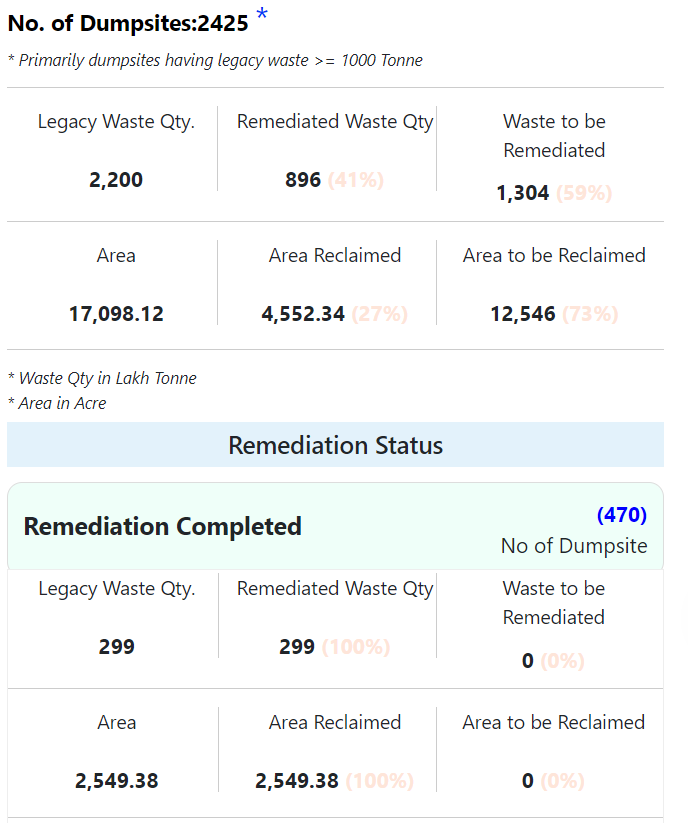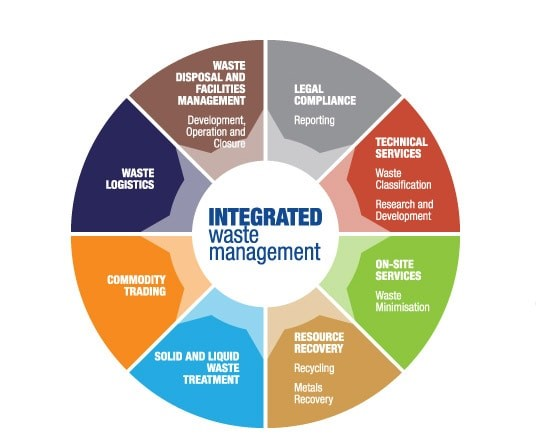Rapid Fire
Status of Legacy Waste Management under SBM 2.0
- 24 Sep 2024
- 2 min read
According to the dashboard of the Swachh Bharat Mission (SBM) 2.0 the legacy waste management has progressed slowly, with only 470 of 2,424 dumpsites remediated and 16% of the area reclaimed since 2021.
- Legacy waste refers to waste that has been improperly collected and stored for years, often found in landfills, abandoned mines, and industrial sites.
- It poses several challenges, including radiological characterization, safety issues, leachate management, and fire control.
- Processing methods include bioremediation, biomining, stabilisation, and screening.
- It can be classified into four types: containment and storage, buried garbage, soil and groundwater contamination, and waste from contaminated construction materials.
- Legacy waste dumpsites have been created by Municipalities in India in city outskirts due to the lack of solid waste handling facilities.
- According to government estimates, around 15,000 acres of prime real estate is buried under nearly 16 crore tonnes of legacy waste across the country.
- State Performance:
- Tamil Nadu leads in reclaimed area with 837 acres (42%).
- Gujarat tops by percentage, reclaiming 75% (698 out of 938 acres) of its landfill area.
- Swachh Bharat Mission Urban (SBM-U) 2.0 was launched in 2021, with a vision of achieving "Garbage-Free Status" for all cities by 2026.
- SBM-U 1.0 was launched to make urban India Open Defecation Free (ODF).
Read More: 2nd Phase of SBM-U, Making Swachh Bharat Mission A Reality






